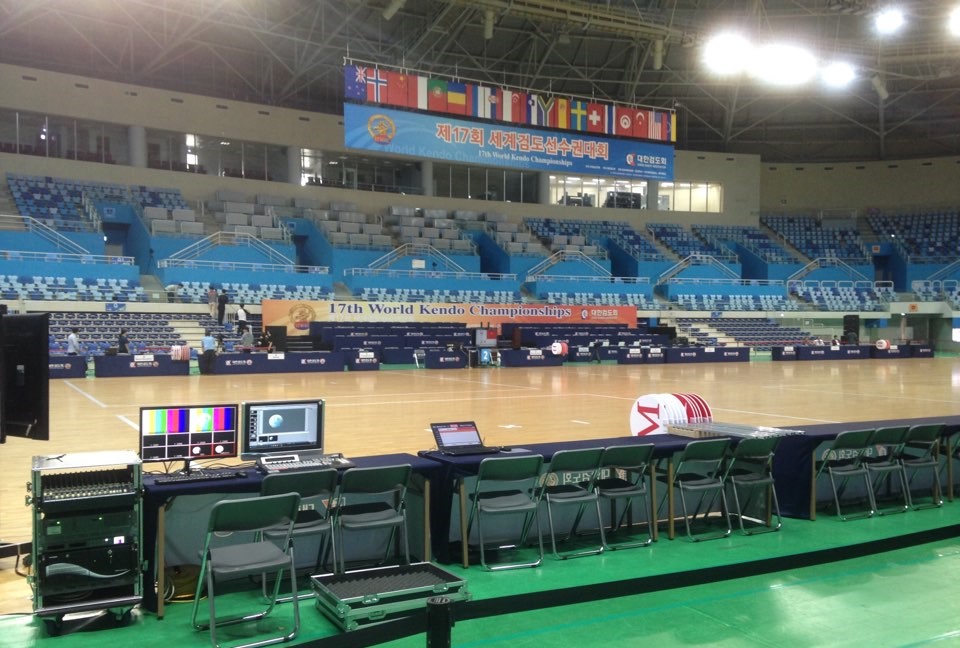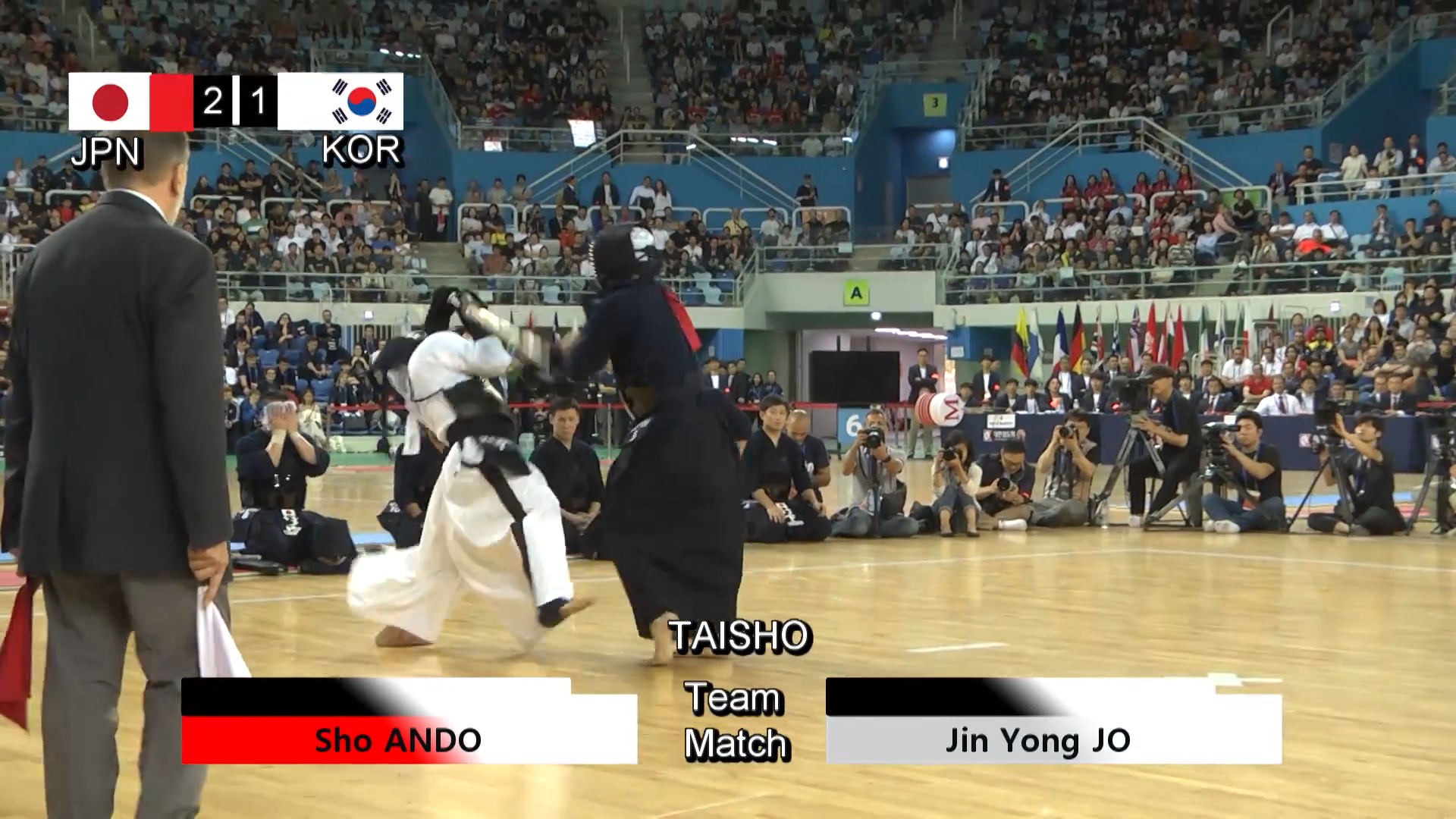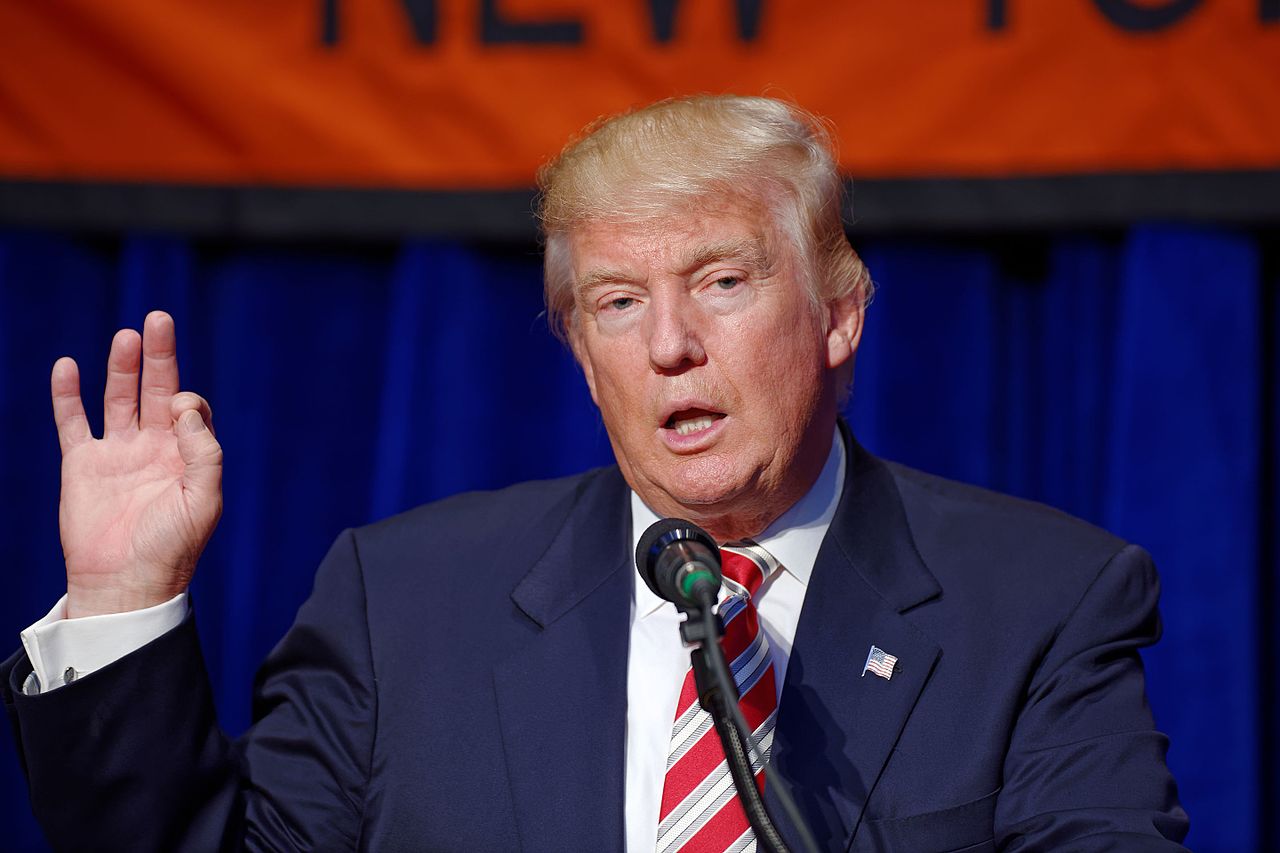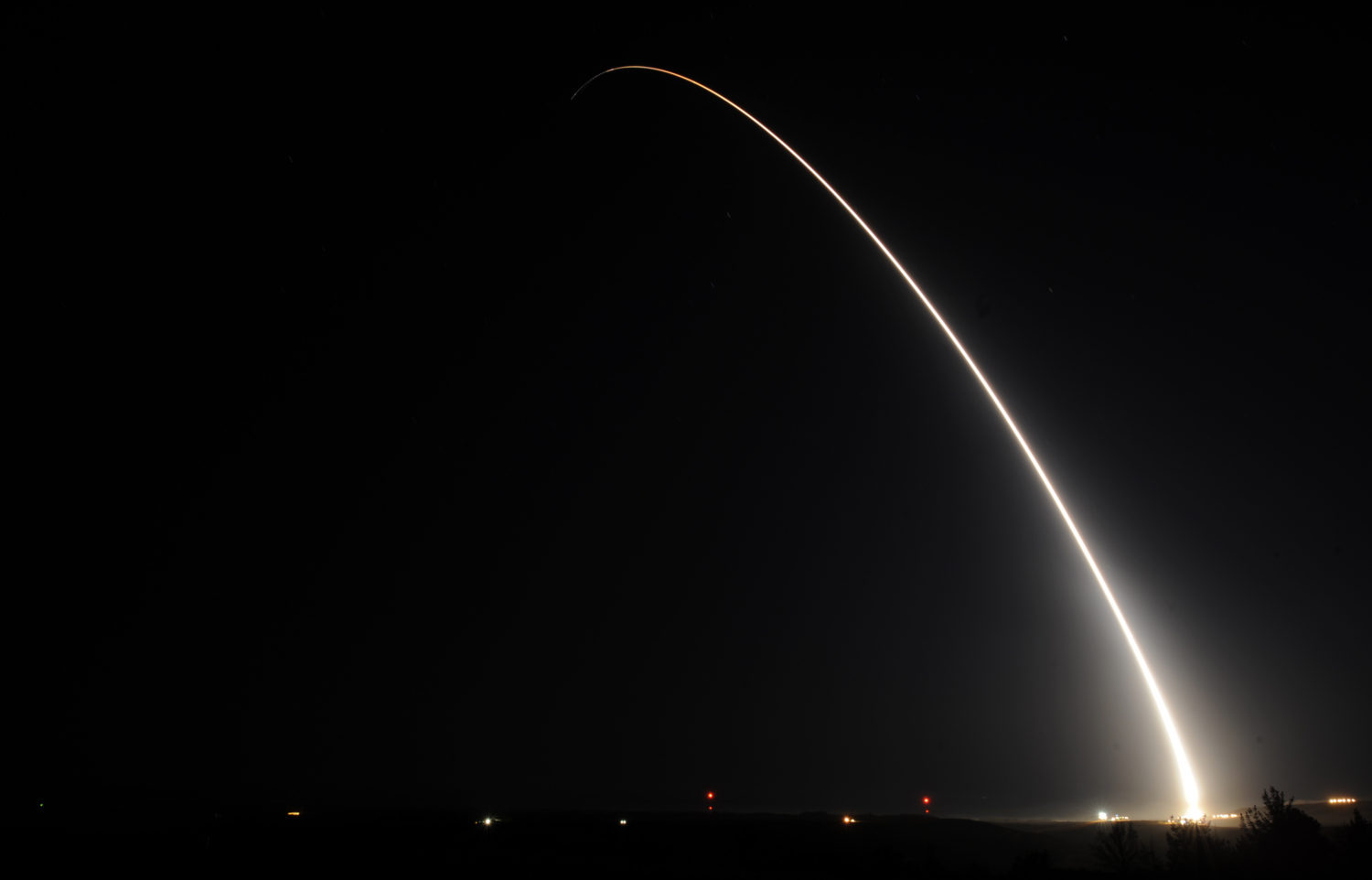The W.K.C. is held every three years. Its seventeenth edition was hosted by South Korea from the 12th to 16th of September, 2018, and featured some 1,200 competitors from 56 countries. (Photo taken by the author)
The date was September 16, 2018, in Incheon, South Korea. For the tenth time since 1979 – and to no-one’s surprise – South Korea faced Japan in the Men’s Team final of the 17th tri-annual World Kendo Championships (W.K.C.). By 4 p.m. it had come down to a nail-biting 2-1 lead in Japan’s favor. The finals would be decided by the fifth and final members of each team, the so-called “generals”. Jin Yong Jo, the Korean general, would do his best to secure a sixth tiebreaker match; an onslaught against which the Japanese general, Sho Ando, would attempt to weather.
The context of this match was not lost on an audience that was predominantly Korean. The 17th W.K.C. was the Korean men’s team’s tenth attempt to win gold by defeating Japan directly. Up to that point, Korea had faced Japan in the finals nine times and lost nine times. Of the sixteen gold medals awarded for the Men’s Team division throughout W.K.C. history, Japan had won all of them except one. The other gold was picked up by South Korea in 2006, when it faced not Japan but the U.S.A. in the final.
Kendo is a Japanese martial art where armored practitioners spar one-on-one using swords made of bamboo slats. Matches are three to five minutes long and decided on a best-of-three-points basis. For team divisions, overall victory goes to the team that wins the most out of five matches. A single point is awarded based on several criteria: a strike made cleanly over the right targets (head, wrist, torso, and throat), appropriate spirit (active posture and shouting, or kiai), and a demonstrable state of physical and mental alertness (judged based on the follow-through after the strike). Due to these qualitative factors, there is no electronic scoring in kendo; points are judged by the three referees observing the match.
The subjective nature of this scoring system creates less issues than one might think. In kendo, one of the worst sins is to displace one’s own shortcomings upon others. Instead of outwardly lamenting a referee’s questionable judgment, the spirit of kendo would have one inwardly reflecting on why a strike might not have been good enough to be interpreted as a point.
In any case, the competitive aspect of kendo is less important than demonstrating kendo’s budo (武道; “martial art”) spirit. Indeed, kendo practitioners make a point of resisting associations of kendo as a “sport”. Kendo in Japan is unequivocally a martial art – the distinction being that sports are based on overcoming external opponents whereas the point of budo is to overcome oneself. One doesn’t “defeat” opponents in kendo so much as one demonstrates the progress one has made on their abstract quest for self-cultivation. “Winning” matters less than paying respect to the sparring partner who permits one to learn how to overcome their personal limitations. Celebrating victory in the way a soccer player might after a goal, or how an Olympic fencer might pump her fists after a successful tag, is unacceptable in kendo. By extension, this implies that competition – including national rivalries – should be irrelevant to kendo.
It is curious, then, that Korea’s sense of national pride was at stake during the W.K.C. From the word go, Koreans make a somewhat arbitrary distinction between kendo and kumdo (kendo being the Japanese and more globally recognized version, and kumdo being the Korean-ized version of kendo.) They are largely the same, sharing the same rules and spelled with the same Chinese characters (剣道), but pronounced using the linguistic rules of their respective countries, which is itself indicative of national tensions in kendo.
Resentment for Japan is evident in the complaints made by some kumdo practitioners of biased refereeing in the W.K.C. Supposedly, South Korea faces a glass ceiling attributable to Japanese favoritism among the referees. The argument goes that, as international referees are more likely to have trained with kendo rather than kumdo and will likely have deeper ties with Japanese sensei, they will side with Japan over Korea by default over tournament rulings.
Japan’s perspective was clarified in an interview with Mr. A, a Japanese national who learned kendo in his home country and has experience with university-level kumdo in Korea. According to Mr. A, professional kumdo athletes are stereotyped as excessively violent in Japan. Japanese acknowledge that Korean athletes are physically powerful; what they disapprove of is when Koreans use their physique to essentially brute-force their way to victory. This reflects a sports-appropriate, “win-at-all-costs”, un-kendo–like mentality that Japanese find distasteful. This was true during the 17th W.K.C., when the Men’s Team final saw its share of ugly physical moments between Korea and Japan.
While it is well-known that there is little political love lost between Japan and Korea, it is interesting to see a similar dynamic in kendo. Studying how the two countries diverge on a subject that should otherwise be identical is illuminating for it sheds light on their cultural differences; what attitudes and priorities one might possess that the other does not.
Excessive and inappropriate use of force in the 17th W.K.C Men’s Team final. (Photo: Youtube)
Succinctly, a key difference of kendo and kumdo is the degree to which each observes the rituals of courtesy and etiquette. Respect is paramount in Japanese budo. Accordingly, gestures of respect in kendo are highly ritualized and specific, and practitioners are expected to adhere religiously to them. These rituals can range from the basic, such as those of rei (礼; “respect”, or the act of bowing as a way of showing respect), to the more unusual, such as sonkyo (蹲踞; a unique form of bowing, wherein sparring partners squat in place synchronically before they begin sparring).
Though respect is just as important in kumdo, it is less ritualized. Some of the differences are simply arbitrary variations created to make kumdo distinct from kendo. Case in point is the complete absence of sonkyo in Korea. Mr. A noted his surprise after learning this and stressed the importance of sonkyo in Japan by describing how referees in Japanese high schools go out of their way to ask contestants to re-perform improper sonkyo. Ms. O, an exchange student from France, echoed this sentiment. She and Mr. A also described university kumdo as less structured and more match-oriented than their respective (kendo) dojos in France and Japan, which were centered around endlessly perfecting a catalogue of techniques rather than freeform sparring.

Ando and Jo perform sonkyo before their bout begins. (Photo: YouTube)
But the most shocking difference presented itself during the 17th W.K.C. – not from the athletes, but from the conduct of the audience. Cheering in kendo tends to be subdued, Mr. A describes. As per kendo’s reduced emphasis on overt competition, audiences generally refrain from shouting too often from the stands, while clapping is reserved for impressive displays and only in polite bursts. Referee rulings are considered absolute and in under no circumstance is booing, yelling foul, or publicly second-guessing them ever allowed.
All three of these were blatantly on display during the match between Jo and Ando. Just as mortifying were the moments when spectators exploded into cheers of “Daehanminguk hwaiting!” (“Go Korea!”) and whooped in approval when Ando was penalized for a foul. Most egregious of all was when the audience repeated that classic South Korean soccer chant: a cry of “Daehanminguk!” followed by five claps made in rhythmic procession. The cheering got so out of hand that the organizers were forced to make announcements asking the audience to rein in their excitement, to little avail.
To Korea, kumdo seems as much a competitive sport as a martial art. This relates to Korea’s eagerness to popularize kumdo through efforts like bringing it to the Olympics, as the added exposure and mass appeal would be a boon for kendo’s future. Japan on the other hand continues to be wary of the idea, citing Olympic judo as what could end up happening to a sports-ified kendo. The fear is that turning kendo into a competitive sport may erode the budo principles that make kendo valuable in the first place, replacing its emphasis on self-cultivation with a game-like “win-at-all-costs” mindset.
As Mr. A agrees, Koreans can be “rowdy” when it comes to athletics. Like other international observers, Mr. A was disappointed by the audience’s behavior during the 17th W.K.C. The tournament reinforced what he and other Japanese perceive as Koreans’ general bellicosity and near-obsession with winning. Still, Mr. A sympathized with Korea, understanding its assertiveness as a natural response to its history with foreign invasion. He further understood that Koreans have reason to be distrustful of Japan, that there is fault on both sides when it comes to Japan-Korea animosity, and regretfully noted how many of his peers in Japan don’t care much for Korea. Ms. O lamented what she sees as the infusion of politics in the W.K.C., saying that it has produced an unflattering but inaccurate image of Korea. During her time in Korea, she enjoyed the politeness and practical sparring-focused styles of kumdo practitioners; having learned so much, she was disheartened to see Korea being misrepresented as ill-mannered.

Jo helps Ando get back on his feet during their earlier meeting in the Men’s Individual final. (Photo: YouTube)
While the 17th W.K.C. was certainly marred by unpleasantness, it was far from a complete travesty. Before their meeting as generals in the Men’s Team finals, Jo and Ando had faced off in the Men’s Individual finals just two days prior. This match is considered one of the highlights of the entire tournament; a display of skill and sportsmanship equaled only by the odiousness of their rematch two days later. There are Koreans who concede that Ando’s performance richly deserved gold, just as there are Japanese who are impressed by Korea’s skill at kendo and acknowledge that some of the referees’ calls were, in hindsight, made in haste. For Korea’s part, there is a general acceptance of guilt for their behavior during the W.K.C. Weak rationalizations made in the tournament’s aftermath (such as the claim that the spectators did not know kumdo and were thus unaware of the behavior expected of them) were quickly replaced with contrition. A cursory look at comments on the internet, for example, shows near-unanimous self-criticism for the audience’s boorishness.
Fortunately, the rancor of Japan and Korea’s kendo rivalry seems to manifest solely at the competitive level. In all other things related to kendo, Koreans and Japanese abide by the norm of respect. For instance, Japanese and Korean sensei who came to the 17th W.K.C. as VVIPs treated each other deferentially, some greeting each other as old friends. Cross-cultural or cross-border exchanges between kendo and kumdo dojos are common and generally regarded with enthusiasm. The Yonsei University Kumdo Association, for example, scheduled annual exchanges with the Keio University Kendo Team before the Covid-19 pandemic and hosted exercises with kendo practitioners from abroad.
Political disagreements almost never feature in these exchanges. Deference to others is as law and practitioners from both sides treat each other with courtesy, if not as friends – which makes it all the more unfortunate that national rivalries do exist outside of training. Still, the day-to-day concerns of kendo and kumdo communities are on personal growth or watching impressive kendo; not getting bogged down in yesteryear’s kendo drama. At the best of times, this can translate to a general “live-and-let-live” attitude amongst practitioners.
We can only presume that Korea and Japan still have far to go before they can put their longstanding rivalry to rest. But just as kendo gives us a unique perspective into their differences, it also shows there is just enough common ground between the two countries – rooted in a mutual desire to promote that which is best in kendo – to be optimistic. I am reminded of an acquaintance’s personal retelling of the afterparty on the night of the last day of the W.K.C. Her description of Jo, Ando, and the members from the Korean and Japanese national teams merrily drunk together, grievances forgotten, isn’t just amusing; it is reason to wonder. And hope.
Jun Kyu Baek lived in Malaysia for most of his life before coming to Korea to obtain his bachelor’s degree in International Studies and now his master’s in Global Affairs and Policy at Yonsei GSIS. He has been part of Yonsei University’s kumdo club since his freshman year. He believes his years spent abroad gives him perspective on his home country.
- “I Love My Body”: Hwasa and Female Empowerment in K-Pop and Korean Society - May 6, 2025
- English Fever in South Korea - February 24, 2025
- South Korea’s Medical School Expansion – Cure Worse than the Disease? - October 20, 2024








